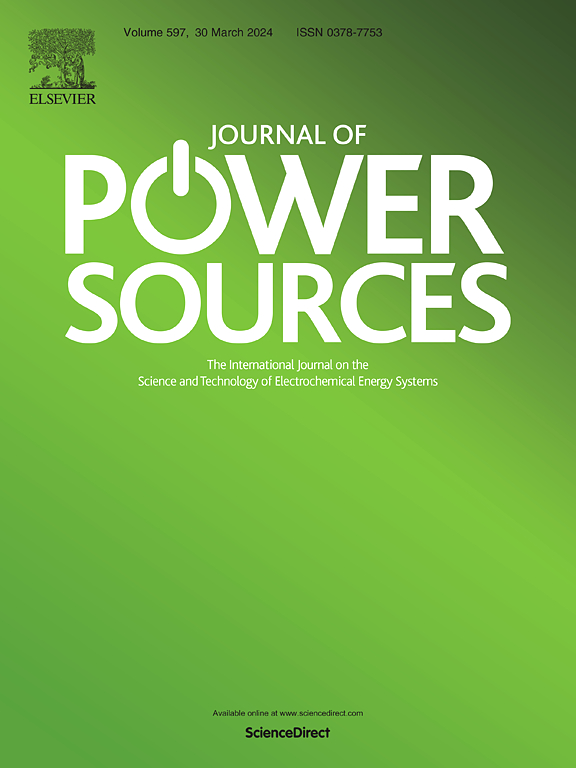基于不同电解质体系的可充电铝硫(Al-S)电池的研究进展
IF 8.1
2区 工程技术
Q1 CHEMISTRY, PHYSICAL
引用次数: 0
摘要
金属铝价格低廉、无污染、使用安全、资源丰富。它在电化学储能方面潜力巨大,理论比容量高达 2980 mAh g-1。硫不仅具有原料丰富、价格低廉的优势,而且理论比容量为 1675 mAh g-1。如果与金属铝搭配,铝-S 电池的理论能量密度可达 1340 Wh kg-1。然而,目前对 Al-S 电池的研究仍处于早期阶段,电解质体系的差异对 Al-S 电池电化学性能和工作机理的影响尚不明确。研究铝硫电池的电化学反应机理、容量衰减机理以及改善电荷转移动力学的策略,对于提高铝硫电池的电化学性能至关重要。从这个角度出发,本文全面总结了不同电解质体系的铝硫电池的电化学性能、充放电机理和电池级成本优势。根据不同的电解质体系,阐明了 S 的相变过程和多硫化物的穿梭效应对 Al-S 电池电化学性能的影响。此外,针对铝-S 电池目前存在的关键问题,总结并展望了下一步的研究方向。本文章由计算机程序翻译,如有差异,请以英文原文为准。

Research progress on rechargeable aluminum sulfur (Al-S) batteries based on different electrolyte systems
Metal aluminum is inexpensive, pollution-free, safe to use, and abundant in resources. It has great potential in electrochemical energy storage, with a theoretical specific capacity of up to 2980 mAh g−1. Sulfur not only has the advantages of abundant raw materials and low prices, but also has a theoretical capacity of 1675 mAh g−1. The theoretical energy density of Al-S batteries can reach up to 1340 Wh kg−1 when matched with metallic aluminum. However, the current research on Al-S batteries is still in its early stages, and the impact of differences in electrolyte systems on the electrochemical performance and working mechanism of Al-S batteries is not yet clear. The research on the electrochemical reaction mechanism, capacity degradation mechanism, and strategies to improve charge transfer kinetics of aluminum sulfur batteries is crucial for improving their electrochemical performance. From this perspective, this paper comprehensively summarizes the electrochemical performance, charging/discharging mechanisms, and battery level cost advantages of Al-S batteries with different electrolyte systems. The influence of the phase transition process of S and the shuttle effect of polysulfides on the electrochemical performance of Al-S batteries is elucidated based on different electrolyte systems. In addition, in response to the key issues currently existing in Al-S batteries, the next research directions are summarized and prospected.
求助全文
通过发布文献求助,成功后即可免费获取论文全文。
去求助
来源期刊

Journal of Power Sources
工程技术-电化学
CiteScore
16.40
自引率
6.50%
发文量
1249
审稿时长
36 days
期刊介绍:
The Journal of Power Sources is a publication catering to researchers and technologists interested in various aspects of the science, technology, and applications of electrochemical power sources. It covers original research and reviews on primary and secondary batteries, fuel cells, supercapacitors, and photo-electrochemical cells.
Topics considered include the research, development and applications of nanomaterials and novel componentry for these devices. Examples of applications of these electrochemical power sources include:
• Portable electronics
• Electric and Hybrid Electric Vehicles
• Uninterruptible Power Supply (UPS) systems
• Storage of renewable energy
• Satellites and deep space probes
• Boats and ships, drones and aircrafts
• Wearable energy storage systems
 求助内容:
求助内容: 应助结果提醒方式:
应助结果提醒方式:


